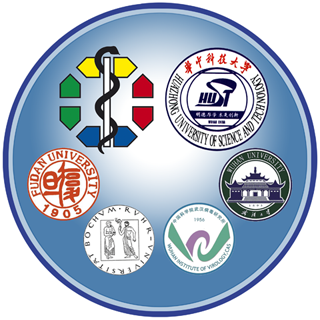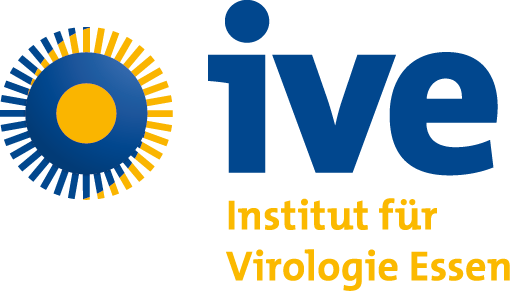Publications
Number of TRR60 publications/joint publications
total: 292 publications in Funding Period 1 + 2 (until December 2018)
thereof: 98 Sino-German joint publications (= 33%)
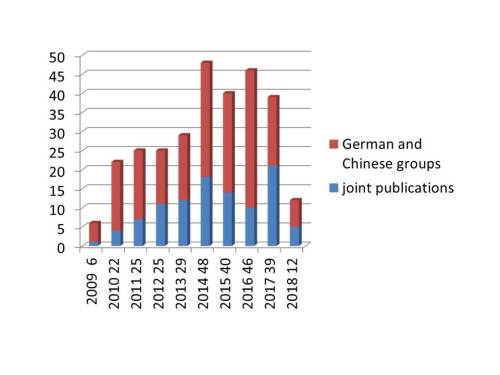
TRR60 list of publications
list of all TRR60 publications for download
(final version 31 December, 2018)
For further publications of the TRR60 members you may check the homepage of the Sino-German Virtual Institute for Viral Immunology www.uni-due.de/sgvivi
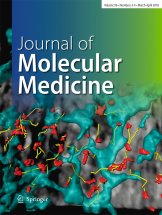
April 2018 Imaging of cytotoxic antiviral immunity
Imaging of cytotoxic antiviral immunity while considering the 3R principle of animal research
Journal of Molecular Medicine, , Volume 96, Issue 3-4
Abstract
Adoptive cell transfer approaches for antigen-specific CD8+ T cells are used widely to study their effector potential during infections or cancer. However, contemporary methodological adaptations regarding transferred cell numbers, advanced imaging, and the 3R principle of animal research have been largely omitted. Here, we introduce an improved cell transfer method that reduces the number of donor animals substantially and fulfills the requirements for intravital imaging under physiological conditions. For this, we analyzed the well-established Friend retrovirus (FV) mouse model. Donor mice that expressed a FV-specific T cell receptor (TCRtg) and the fluorescent protein tdTomato were used as source of antigen-specific CD8+ T cells. Only a few drops of peripheral blood were sufficient to isolate ~ 150,000 naive reporter cells from which 1000 were adoptively transferred into recently FV-infected recipients. The cells became activated and functional and expanded strongly in the spleen and bone marrow within 10 days post infection. Transferred CD8+ T cells participated in the antiviral host response within a natural range and developed an effector phenotype indistinguishable from endogenous effector CD8+ T cells. Additionally, the generated reporter cell frequency allowed single cell visualization and tracking of a physiological antiretroviral CD8+ T cell response by intravital two-photon microscopy. Highly reproducible results were obtained in independent experiments by reusing the same donors repetitively for multiple transfers. Our approach allows a strong reduction of experimental animals required for studies on antigen-specific CD8+ T cell function and should be applicable to other transfer models.
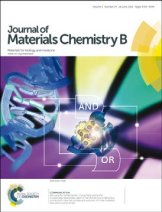
June 2015 Nanoparticles for vaccination
Viktoriya Sokolova, Astrid Maria Westendorf, Jan Buer, Klaus Überla, Matthias Epple
The potential of nanoparticles for the immunization against viral infections (review)
Journal of Materials Chemistry B, 2015, 3, 4767 - 4779
Abstract
Vaccination has a great impact on the prevention and control of infectious diseases. However, there are still many infectious diseases for which an effective vaccine is missing. Thirty years after the discovery of the AIDS-pathogen (human immunodeficiency virus, HIV) and intensive research, there is still no protective immunity against the HIV infection. Over the past decade, nanoparticulate systems such as virus-like particles, liposomes, polymers and inorganic nanoparticles have received attention as potential delivery vehicles which can be loaded or functionalized with active biomolecules (antigens and adjuvants). Here we compare the properties of different nanoparticulate systems and assess their potential for the development of new vaccines against a range of viral infections.
February 2015 New outstanding publication by TRR60 Group C06N
Khairnar V, Duhan V, Maney SK, Honke N, Shaabani N, Pandyra AA, Seifert M, Pozdeev V, Xu HC, Sharma P, Baldin F, Marquardsen F, Merches K, Lang E, Kirschning C, Westendorf AM, Häussinger D, Lang F, Dittmer U, Küppers R, Recher M, Hardt C, Scheffrahn I, Beauchemin N, Göthert JR, Singer BB, Lang PA, Lang KS.
CEACAM1 induces B-cell survival and is essential for protective antiviral antibody production.
Nat Commun. 2015 Feb 18;6:6217.
Abstract
B cells are essential for antiviral immune defence because they produce neutralizing antibodies, present antigen and maintain the lymphoid architecture. Here we show that intrinsic signalling of CEACAM1 is essential for generating efficient B-cell responses. Although CEACAM1 exerts limited influence on the proliferation of B cells, expression of CEACAM1 induces survival of proliferating B cells via the BTK/Syk/NF-κB-axis. The absence of this signalling cascade in naive Ceacam1(-/-) mice limits the survival of B cells. During systemic infection with cytopathic vesicular stomatitis virus, Ceacam1(-/-) mice can barely induce neutralizing antibody responses and die early after infection. We find, therefore, that CEACAM1 is a crucial regulator of B-cell survival, influencing B-cell numbers and protective antiviral antibody responses.
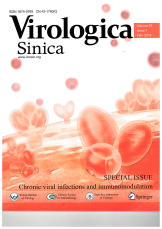
Virologica Sinica February 2014
Virologica Sinica has dedicated its February 2014 issue to TRR60 topics. This is a special issue on "Chronic viral infections and immunomodulation" organized by PI Mengji Lu (Project B5), with the focus on the interactions of the host immune system with HBV, HCV and HIV. Editor-in-chief of Virologica Sinica is PI Xinwen Chen (A9N).
Selected high ranking TRR60 publications - FP1
|
Liu J, Zhang E, Ma Z, Wu W, Kosinska A, Zhang X, Möller I, Seiz P, Glebe D, Wang B, Yang D, Lu M, Roggendorf M. |
|
Dietze KK, Zelinskyy G, Liu J, Kretzmer F, Schimmer S, Dittmer U. |
|
Chen J, Wu M, Zhang X, Zhang W, Zhang Z, Chen L, He J, Zheng Y, Chen C, Wang F, Hu Y, Zhou X, Wang C, Xu Y, Lu M, Yuan Z. |
|
Knuschke T, Sokolova V, Rotan O, Hansen W, Staeheli P, Epple M, Buer J, Westendorf AM. |
|
Kosinska AD, Zhang E, Johrden L, Liu J, Seiz PL, Zhang X, Ma Z, Kemper T, Fiedler M, Glebe D, Wildner O, Dittmer U, Lu M, Roggendorf M. |
|
Li J, Liu K, Liu Y, Xu Y, Zhang F, Yang H, Liu J, Pan T, Chen J, Zhang X, Chen L, Zhang J, Zhang X, Zhang Z, and Yuan Z. Interferon induces cell-to-cell transfer of antiviral molecules via exosomes as an antiviral mechanism. |
|
Dietze KK, Zelinskyy G, Gibbert K, Schimmer S, Francois S, Myers L, Sparwasser T, Hasenkrug KJ, Dittmer U. |
|
Ruhl M, Knuschke T, Schewior K, Glavinic L, Neumann-Haefelin C, Chang DI, Klein M, Heinemann FM, Tenckhoff H, Wiese M, Horn PA, Viazov S, Spengler U, Roggendorf M, Scherbaum N, Nattermann J, Hoffmann D, Timm J; East German HCV Study Group. |
|
Bröring R, Zhang X, Kottilil S, Trippler M, Jiang M, Lu M, Gerken G, Schlaak JF. |
|
Zelinskyy G, Dietze KK, Hüsecken YP, Schimmer S, Nair S, Werner T, Gibbert K, Kershaw O, Gruber AD, Sparwasser T, Dittmer U. |

